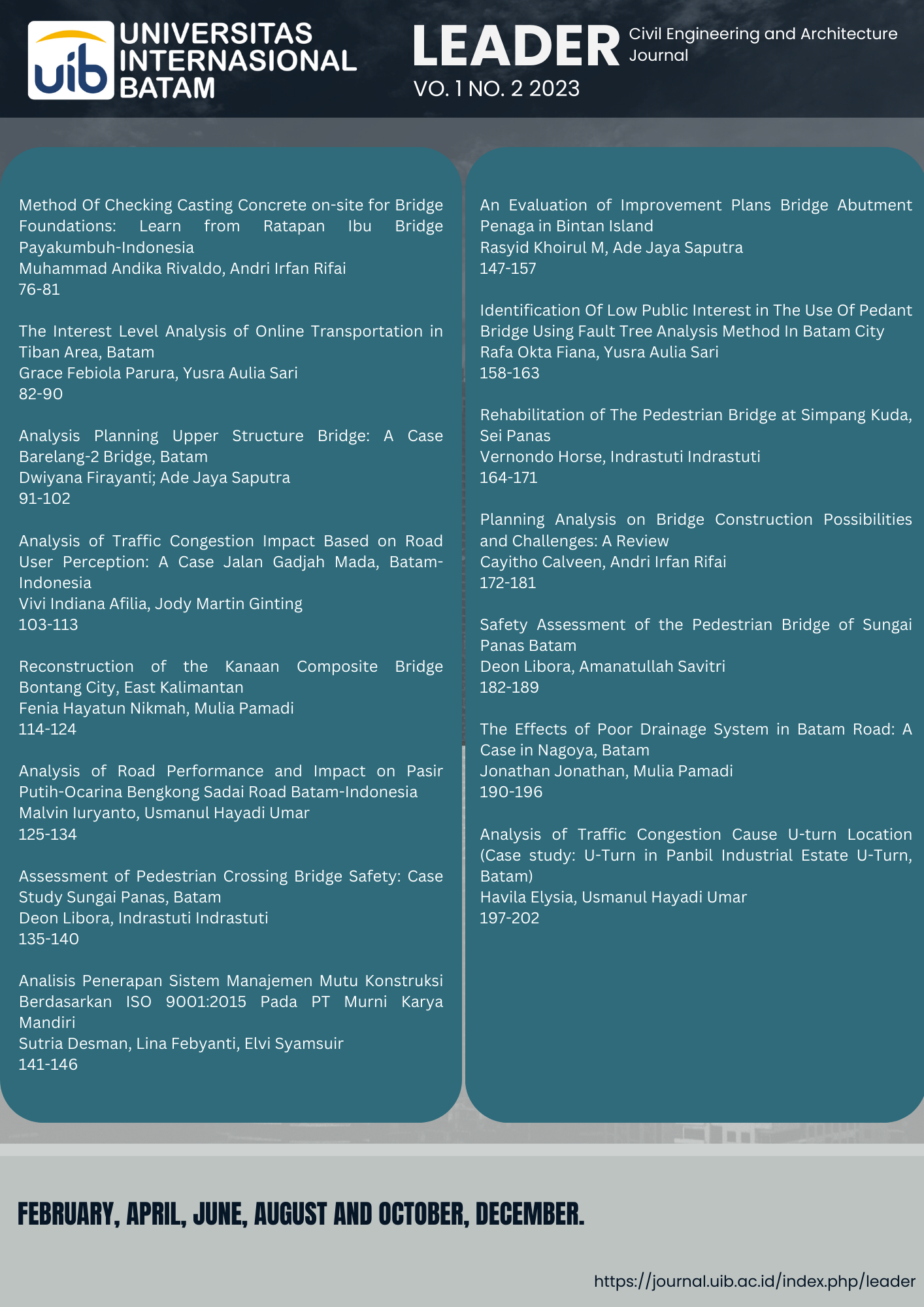Rehabilitation of The Pedestrian Bridge at Simpang Kuda, Sei Panas
DOI:
https://doi.org/10.37253/leader.v1i2.8097Keywords:
Pedestrian Bridges Rehabilitation MaintenanceAbstract
Transportation plays a crucial role in global development, and as transportation systems improve, so do development activities and the economy. However, with the growth of transportation and the number of vehicles on the road, the risk of accidents also increases. Governments are constructing pedestrian facilities to reduce the likelihood of pedestrian accidents. Pedestrian bridges are designed to improve pedestrian safety and convenience. Nevertheless, some pedestrian bridges built by the government, like the one located at Simpang Kuda, Sei Panas, experience low utilization due to various factors. These factors include inadequate placement, inconvenient staircases that result in longer journeys, and unsafe bridge conditions. Consequently, pedestrians often cross the road directly rather than using the pedestrian bridge. This study focuses on evaluating the condition of the pedestrian bridge at Simpang Kuda, Sei Panas, and identifying necessary measures for rehabilitation and maintenance. The research incorporates two types of data; primary data is gathered through observation, while literature review methods are used to collect secondary data. Observations and visual inspections identify common issues such as concrete cracks, absence of handrails, steel corrosion, and overgrown vegetation. Recommendations to address these problems involve repairing cracks, installing handrails, protecting against corrosion, managing vegetation growth, and implementing regular maintenance. The research findings offer valuable guidance to local authorities, enabling them to prioritize pedestrian safety and ensure the bridge's sustained functionality. Adequate allocation of resources and the local government's commitment are essential in implementing these recommendations and enhancing the well-being of pedestrians in urban areas.







